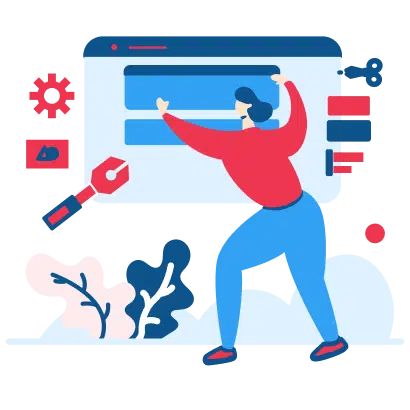Hey there! Ever felt like a website or app was trying a little too hard to get you to do something? You might have encountered what we call “dark patterns” in UX design. These are like little traps set up by designers to make you click or buy things you might not actually want. Let’s take a peek at 10 sneaky tricks they use and how you can outsmart them.
What Are Dark Patterns in User Experience?
Dark patterns are basically design tricks that try to trick you into doing things you might not really want to do online. It’s like when a pop-up makes you feel guilty for not signing up for something. Sneaky, right?
What Are the Common Types of Dark Patterns?
1. Confirmshaming :
Ever seen a button that says something like “No, I don’t want to save money”? That’s confirmshaming – making you feel bad for not clicking what they want you to click.
2. Fake Urgency and the Fear of Missing Out :
Those “limited time only” deals or “only 3 left in stock” notices? They’re designed to make you feel like you’ll miss out if you don’t act fast. Don’t fall for it!
3. Nagging :
You know those annoying pop-ups that keep asking you to do something even after you said no? That’s nagging, and it’s not cool.
4. Sneaking :
Sometimes, designers hide stuff in the fine print or pre-check boxes for things you don’t want during checkout. Keep an eye out for those sneaky moves.
5. Disguised Ads :
Ever clicked on something thinking it’s part of the website, but it turns out to be an ad? Yeah, that’s disguised ads – making ads look like regular content.
6. Intentional Misdirection :
Ever ended up on a page you didn’t mean to because of a tricky button? That’s intentional misdirection, where they lead you astray on purpose.
7. The Roach Motel Pattern :
It’s easy to sign up for something, but getting out of it? Not so much. That’s the roach motel pattern – trapping you in without an easy escape.
8. Preselection :
Ever noticed boxes already checked for you during sign-up? That’s preselection – making choices for you without asking.
9. Friend Spam :
Getting spammed with invites to join or share stuff? That’s friend spam – using social pressure to get you to join in.
10. Negative Option Billing or Forced Continuity :
Signing you up for subscriptions and charging you automatically unless you opt out? That’s negative option billing – not cool at all.
How to Avoid Dark Patterns in UX Design
- Be Honest and Clear: Look for transparency in what you’re being asked to do.
- Make Your Own Choices: Don’t let them pressure you into doing something you don’t want to do.
- Test Fairly: Designers, when testing, make sure you’re not tricking people into doing things they don’t want to.
- Listen to Users: Pay attention to feedback and fix any sneaky tricks people point out.
Design Ethically: Always think about how your UX designs might affect users and try to make things better, not trickier.
Conclusion
Dark patterns might try to trick you, but armed with knowledge, you can outsmart them. By understanding these sneaky tricks and knowing how to spot them, you can navigate the digital world with confidence. Designers, remember to keep things honest and user-friendly – it’s the key to creating awesome experiences for everyone.



















